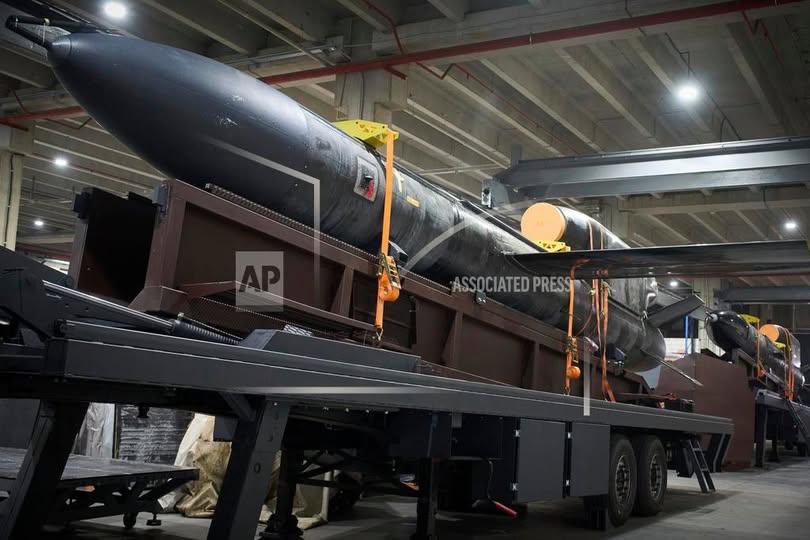Lukatsky, who was given access to photograph the missile at an undisclosed workshop of the Ukrainian defense company Fire Point on August 14, reported that the missile has a range of 3,000 km (1,864 miles).
The technical specifications of the missile have not been made public. Also, the Ukrainian military has not publicly commented on the story.
A domestically developed long-range cruise missile can be a significant capability boost for Ukraine, which has been entirely dependent on Western nations for supplying Kyiv with such weapons.
The missile will allow Ukraine to take the fight back to Russian cities, which have so far been shielded by the worst impacts of the war.

While Ukrainian cities have to suffer an almost daily barrage of long-range missiles, Kyiv has so far been able to hit Russia’s heartland cities only with long-range drones. However, drones could carry only a minuscule warhead, limiting their impact.
The impressive 3,000-km range will bring Russia’s heartland cities, such as Moscow and St. Petersburg, within its range.
The Flamingo appears to be closely modelled on the FP-5 design exhibited by Milanion, a UAE-headquartered defence contractor that has supplied the Ukrainian forces before and which often sets up local manufacturing of its products in customer nations, the Telegraph reported.
If the missile is indeed based on the FP-5, then it is a cruise missile. The Flamingo is a big beast, with a six-metre wingspan and weighing in at six tonnes, including a one-tonne warhead.
Even if the missile has reached serial production, there is no clarity as to when Ukraine will start using it in the field.
However, it must be noted that Russia has advanced air defense systems, and Ukraine will probably have to launch multiple missiles together, along with dozens of decoys and drones, to beat the Russian AD systems.
Theoretically, the missile will allow Ukraine to take the fight to Russian cities; however, the missile’s real-world effectiveness will be known only when Kyiv starts using them in large numbers.
Nevertheless, the missile represents a significant capability boost for Ukraine, which had neither long-range drones nor long-range missiles at the start of the war three years ago.
Earlier in June, Ukrainian media reported that the homegrown short-range Sapsan ballistic missile had successfully completed combat testing and is in the process of serial production.
However, it remains to be seen if the use of these missiles in significant numbers can alter the course of the war.
- Via: ET Desk
- With Inputs from AFP



